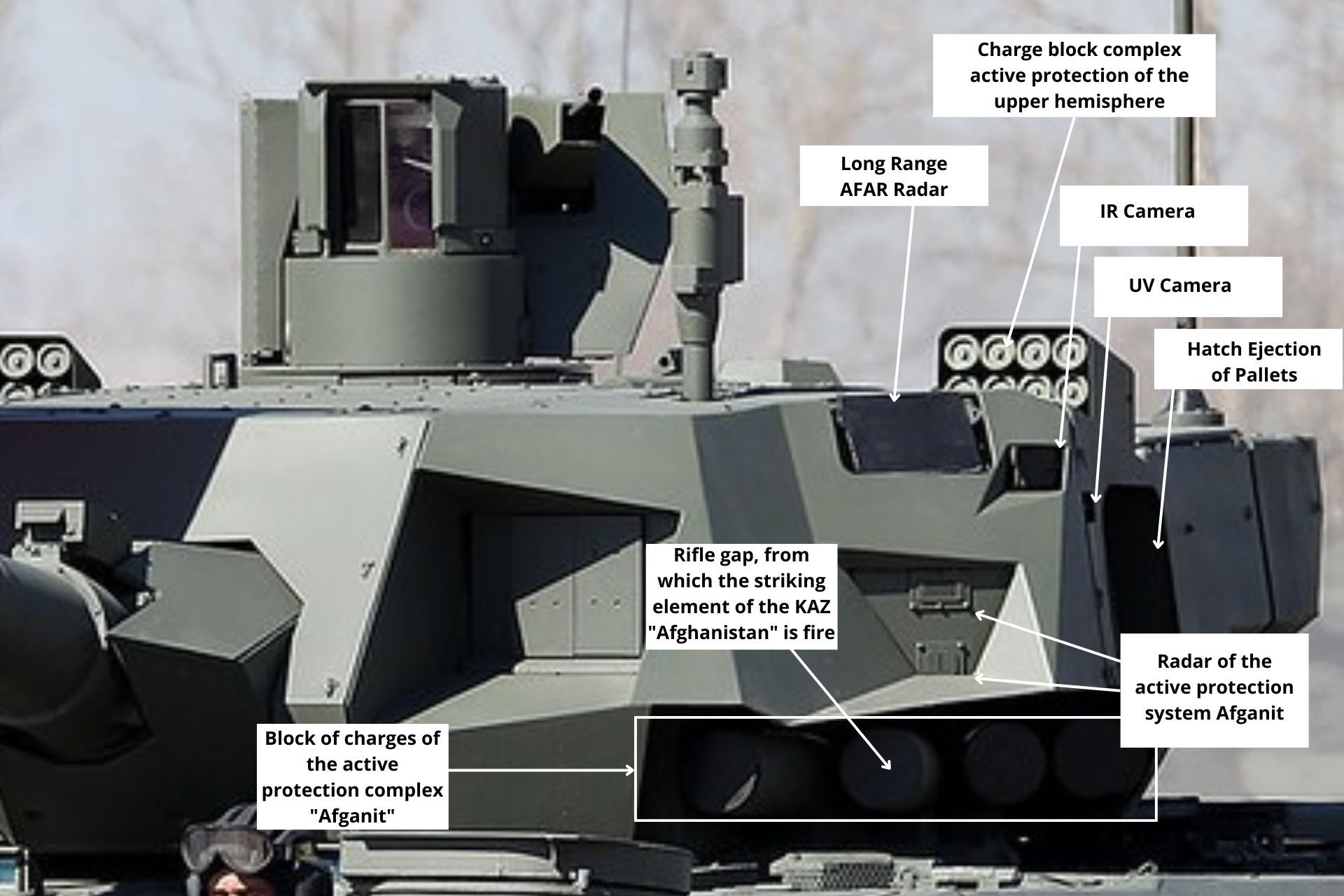Breaking News
Analysis: What is Russian T-14 Armata’s active protection system ?.
The T-14 Armata, Russia's advanced main battle tank, is now equipped with the Afghanit Active Protection System (APS), a significant upgrade from the older Drozd-2 APS. This modern system represents a shift in defensive capabilities by utilizing high-explosive fragmentation grenades instead of traditional rockets to neutralize incoming threats. These grenades require less storage space and can be launched at higher velocities, enhancing the tank's responsiveness to aerial threats and projectiles.
Follow Army Recognition on Google News at this link

The T-14 Armata during the Victory Day Parade in 2019 (Picture source: Vitaly Kuzmin)
The Afghanit APS includes four sets of 12 launch tubes located on the rear sides of the turret, which deploy HE-Frag grenades creating large blast zones. This feature minimizes the need for precise targeting as the grenades only need to be directed towards the general vicinity of the incoming threat, making it highly effective in dynamic combat situations. Unlike its predecessor, which relied solely on radar for threat detection, the Afghanit system incorporates both radar and electro-optical sensors. This integration significantly enhances detection accuracy, allowing it to intercept high-velocity projectiles like Armor-Piercing Fin-Stabilized Discarding Sabot (APFSDS) rounds, which can reach speeds up to 1,700 meters per second.
Additionally, the tank is fitted with the NII Stali Upper Hemisphere Protection Complex, which includes steerable cartridges with smaller charges and a VLS at the top of the turret, corresponding to the vehicle's soft-kill APS. The AESA radar and anti-aircraft machine gun further enable the destruction of approaching missiles and slow-flying shells. Large sensors, presumed to be electro-optical/infrared laser warning receivers, are angularly mounted on the front of the turret, providing 180° coverage, while four smaller sensors, believed to be radars, provide 360° coverage around the turret.
This system is part of a broader trend in military technology where nations are increasingly investing in active protection systems to enhance the survivability of their armored vehicles. Similar systems have been developed globally, like the Trophy APS used by Israeli and American forces, designed to detect and neutralize threats before they can strike the vehicle. Other countries, including Germany, France, and South Korea, are also actively developing APS technology to protect their armored fleets against modern anti-tank weapons.

Detailed view of the Russian T-14 Armata's active protection system (Picture source: Army Recognition)
The T-14 Armata, developed by Russia's Uralvagonzavod, marks a significant advancement in main battle tanks. Officially unveiled during Moscow's Victory Day parade on May 9, 2015, development began around 2013 with the first prototype delivered in 2015. The tank features an unmanned turret, and all crew members are housed in an armored capsule at the front of the hull, significantly enhancing crew safety compared to traditional tank designs. It is armed with a 125mm smoothbore gun capable of firing high-power munitions, including a new generation of laser-guided missiles, and also includes secondary armaments such as a 12.7mm Kord machine gun and a 7.62mm machine gun.
Furthermore, its mobility is powered by a 1,500 hp gas turbine engine, ensuring high-speed maneuverability with a sophisticated suspension system. Field testing and deployment began around 2014, with the first deliveries to the Russian armed forces reported in 2015. The introduction into service has been gradual, with significant operational testing, including in varied climates like the Arctic, to ensure reliability under different environmental conditions. The T-14 has also been tested in combat conditions in Syria and Ukraine.


























